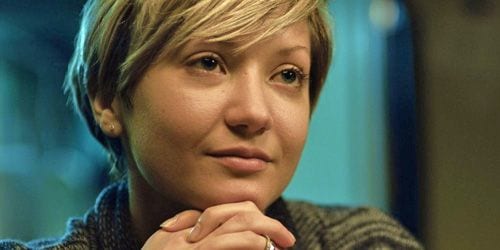
The Blair Witch Project, that now-classic 1999 horror film by Daniel Myrick and Eduardo Sanchez, has proved both an anomaly and an influencer in the years since its initial release. Newer hits like the Paranormal Activity series and even junk like The Devil Inside owe their found-footage style to the earlier film, but in the immediate wake of its success, the low-fi aesthetic failed to catch on. Even the Blair Witch sequel, made by actual documentarians, eschewed that format.
This delayed revival of the Blair Witch style meant that the original filmmakers were strangely unable to take advantage of their success — certainly not the way Paranormal Activity‘s Oren Peli has become a mini-mogul of horror. Even after the found-footage revival, Eduardo Sanchez’s return to horror Lovely Molly barely got a theatrical release in 2012. What release it did get was poorly positioned: it came out in limited release in May, and reached DVD in the US at the end of August. At least one of those dates probably should’ve been October instead (it releases on DVD in the United Kingdom just before Halloween).
Then again, Lovely Molly only seems like a Halloween-friendly ghost story; Sanchez favors a slow-burn naturalism that challenges even the slower pace of the better found-footage hauntings. This movie flirts with found footage — the movie opens with Molly (Gretchen Lodge) talking into her own camera — but often favors a more polished version: handheld camerawork meant to give the story some ground-level grit, but not actual first-person (or, for that matter, faux-objective third-person) perspective.
First-person shots aren’t really necessary, because when Molly moves into her father’s old house with her new husband Tim (the late Johnny Lewis), she spends much of the time alone. Tim, a truck driver, must leave home for long stretches, leaving Molly to hear noises and start to fall apart. That’s really about all there is to the movie: the creepiness of bumps in the night, the sadness of isolation, and the desperation of a former addict — Molly, we eventually learn, has just kicked heroin. Her family, then, shows more concern for her mental and physical health than for potential demonic possession.
The way Molly’s demons manifest themselves in real-life psychological problems is the movie’s best, scariest trick, and early on Lovely Molly stands apart from typical horror routines. It’s particularly striking to see a horror movie focusing on working-class characters, especially a couple without the usual endangered and/or spooky child. Movie ghosts so often invade well-appointed suburban homes with plenty of furniture to overturn, pans to rattle, and kids to threaten. Molly and Tim have fewer options than the families in a typical Paranormal Activity outing; the unspoken answer to that long-standing haunted-house movie question of “why are you still here?” is that they may not have anywhere else to go.
The problem is that Lovely Molly doesn’t have anywhere else to go, either. The cavalcade of troubled pasts and creepy secrets gives the movie a gothic overtone, but also limits the movie’s scares; it’s more of a character study mired in horror-movie ugliness. Lodge, who looks a bit like a rough-living Kate Hudson, gives Molly a raw honesty, but when the movie fails to give her more to do than slowly disintegrate, you might get the uncomfortable feeling that the actress is stranding herself, offering a risky and vulnerable performance to little end.
Though it turns repetitive after 30 or 40 minutes, Lovely Molly never descends into climactic horror movie boilerplate; instead, it favors ambiguities so low-key they don’t always register. Strangely, the DVD’s special features point to a more thoroughly spooky story that the film doesn’t tell. In “Is It Real?”, the most bizarre of several segments dedicated to exploring various aspects of the movie’s story and craft, the filmmakers set out to explore the “dark past” of the house where the movie is set, even though the movie is not actually based on a true story. They hire a team of local Ghost Hunters knock-offs to wave around a bunch of night-vision cameras and claim to have heard ghostly responses to their questions. It’s altogether more ghost-centric than the entirety of Lovely Molly.
It’s also laughable enough to come off as parody, with all of its judicious editing around vague statements meant to imply that something seriously terrifying was going on offscreen. Given Sanchez’s work on Blair Witch and the marketing campaign that surrounded that movie, though, this slapdash attempt to scare up some kind of Lovely Molly mythology is a little sad (in addition to, yes, hilariously inept). However horror formats are trending, Lovely Molly isn’t a reiteration of Blair Witch; its failures are its own.

![Call for Papers: All Things Reconsidered [MUSIC] May-August 2024](https://www.popmatters.com/wp-content/uploads/2024/04/all-things-reconsidered-call-music-may-2024-720x380.jpg)



